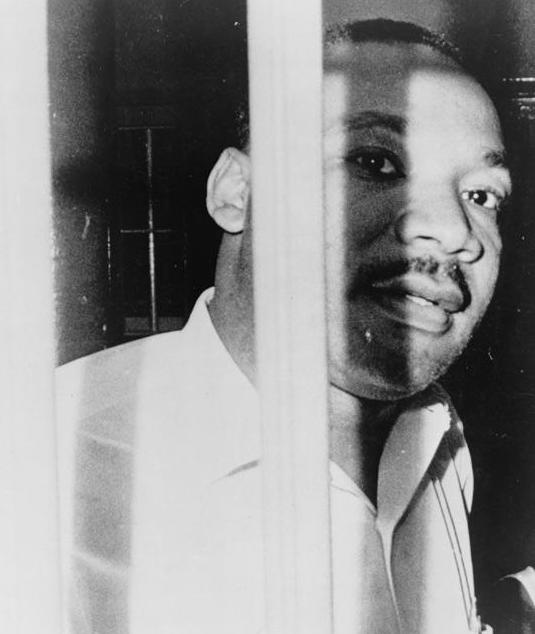
In our schools this week, Rev. Dr. Martin Luther King Jr. will be remembered and praised. Written and spoken tributes will begin with a quote from the sacred canon of his work. And this will not just be true on his birthday, but also on any day of the year when an educator or a student is trying to make a point about social justice. After all, Dr. King is viewed as one of the greatest writers, orators and leaders in the history of our country.
But in his time, Dr. King also inspired discomfort, fear and hate. Many Americans viewed him as a radical who was moving the cause of civil rights too swiftly, and about a third of Americans thought he helped bring on his own assassination. Yet, in death, he has the power to speak to us and strengthen our resolve. The attitude change toward him over time gives us cause for hope.
The tidal wave of hatred didn’t happen overnight. According to the Brookings Institution, in a May 2022 report, “the rise of hate groups and the increase in the number of hate crimes in the United States [became] an epidemic. Over the past 20 years, the number of hate groups in the United States increased by over 100%.” What would Dr. King say to those of us who are responsible for educating America’s children as this awful surge continues here and in other parts of the world?
It's tempting to turn away and pretend this isn’t happening. It’s uncomfortable to ask ourselves whether silence means we are being tactful or being party to the resurgence of anti-Semitism and intolerance toward Black, Hispanic, Asian and Middle Eastern Americans, as well as members of the LGBTQ+ community, people with disabilities and women.
I have a hunch the vast majority of us would say silence is not an option. To explain why I feel this way, let me offer my own favorite Martin Luther King Jr. quote from his “Letter from a Birmingham Jail,” and it relates to all I have just been saying:
“Injustice anywhere is a threat to justice everywhere. We are caught in an inescapable network of mutuality, tied in a single garment of destiny. Whatever affects one directly, affects all indirectly.”
The way I sometimes simplify this elegant quote in my mind is by telling myself that if I don’t attend to a leak in my boat, eventually the whole boat will sink. As school leaders, we know that as hatred surges, we can’t let hate incidents and bias seep into our schools, because acquiescence will bring the whole school community down. We truly are “caught in an inescapable tide of mutuality.”
The tidal wave is real. In 2020, nearly 65% of hate crime incidents were based on race, ethnicity or ancestry bias, mostly against Black Americans. But in addition, in 2021, anti-semitic incidents reached an all-time high in the United States, with a total of 2,717 incidents of assault, harassment and vandalism reported to the Anti-Defamation League (ADL). This is the highest number of incidents on record since ADL began tracking in 1979. Since 2021, anti-Asian hate crimes spiked by 361% in New York alone. And beyond racial and ethnic hatred, The Human Rights Campaign, the country's largest LGBTQ+ civil rights organization, reports that nearly one out of every five hate crimes is now motivated by anti-LGBTQ+ bias.
In a recent report on the topic, Education Week noted “[that] these troubling acts are perpetuated at all by children and youth underscores the enormous responsibility schools and educators must shoulder in combatting the phenomenon.” (1)
If a hate incident strikes a school and makes certain students feel unsafe, school leaders should notify their superintendent, proactively investigate the incident, and organize the most diverse possible group of staff and parents to address causes, remedies and temporary measures to discourage the offenders and make vulnerable students feel secure. Tempers might fly. There may be disagreement, resistance and frustration, but ignoring the threat is more dangerous.
Sometimes diversity seems like an overused word, but it is the key to tempering injustice, including in our schools. Even if you are “in a state where bills have been passed limiting what you can teach with regard to race, American history, politics, sexual orientation and gender identity,” (2) you can avoid a lot of minefields. By developing the most diverse possible staff and cabinet, you will have an empathic group of educators to rely on when you need support. Many of you do this already.
As your national union, AFSA does that, too. In terms of racial, ethnic and gender diversity, our General Executive Board is one of the most diverse in our history. Many of our locals can say the same. The president of one of those locals recently drove that home when he explained that, now that his cabinet is highly diverse in terms of gender, race and religion, he is able to walk in the shoes of others and be a more insightful and just union leader.
Martin Luther King Jr.'s birthday brings us together every year “in a single garment of destiny.” A vast majority of Americans see him as a hero now, crediting him with nonviolently advancing civil rights and social justice. With society in the grips of escalating hate speech and crimes, school leaders and teachers and, frankly, all Americans of varying political stripe, often seem to quote Dr. King’s words to demonstrate their appetite for justice. We even hear this praise on both sides of the aisle in the halls of Congress. This nearly universal respect for a civil rights leader suggests that, deep down, most Americans want to be peaceful and tolerant of differences. This universal wish alone is cause for celebrating Dr. King’s life.
Be well, stay well.
(1) “Hate in Schools,” Francisco Vara-Orta, Education Week, 8/6/18, https://www.edweek.org/leadership/hate-in-schools/2018/08
(2) “Educating for a Diverse Democracy: The Chilling Role of Political Conflict in Blue, Purple, and Red Communities,” https://www.theschoolleader.org/news/political-conflicts-are-having-chilling-effect-public-schools
